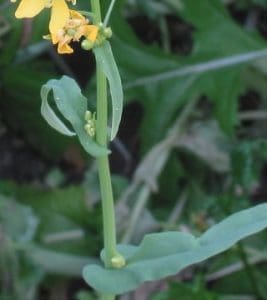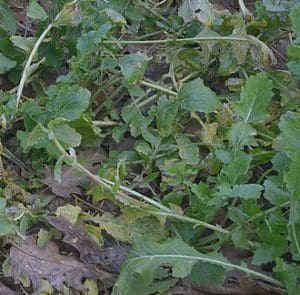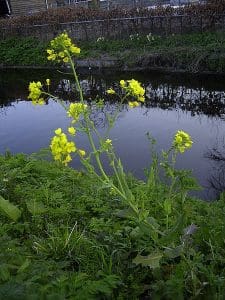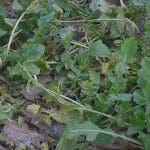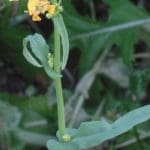Wild Turnip / Autumn / Winter / Spring / Edible
Here we’re looking at the Wild Turnip, however there are several subspecies of Brassica rapa as it has been developed by humans into many types of vegetable and has returned to the wild many times as a feral plant. Cultivated forms include Turnip, Napa cabbage, Bomdong, Bok choy and Rape. The subspecies campestris is believed native to the British Isles, though the ancestral B. rapa probably originated 4000 to 6000 years ago in the Hindu Kush area of Central Asia.
Common Names
Wild Turnip
Botanical Name
Brassica rapa
Scientific Classification
Kingdom – Plantae
Order – Brassicales
Family – Brassicaceae
Physical Characteristics of Wild Turnip
A hairy, upright, annual or biennial, up to 100cm.
Leaves
Basal leaves are stalked and coarsely hairy, up to 40cm long, bright green, deeply indented with a large end lobe. Upper stem leaves are hairless, greyish green with bottom lobes clasping the stem.
Flowers
The cross-shaped yellow flowers form dense inflorescences extending above the flower buds. Petals 6-13mm, about twice as long as sepals.

Fruits
Long thin pods 30-65mm long with a pointy ‘beak’ on the end. Each contains many small seeds.
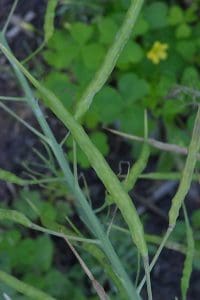
Habitat
Found throughout the British Isles but rare in Scotland, it’s a weed of cultivation, waste ground, roadsides, banks of streams, and rivers.
Known Hazards
None known
Could be Confused with
Similar to Rape and other Wild Mustards but Rape flowers are below or at the same height as the unopened buds and all leaves are dull grey-green.
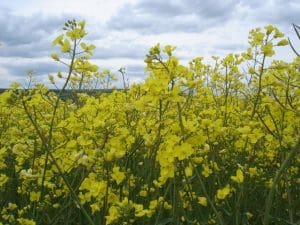
Edible Uses
Cultivated Turnip leaves have a mild, very slightly cabbagey flavour and were once a popular salad green and vegetable. They are still used in the United States, Italy and France. The yellow flowers are sweet with a slight mustardy bite; they make a good addition to summer salads or a garnish. Roots are not as swollen as cultivated turnips but can still be quite large; they should be collected from first-year plants before they produce a flowering stem. The flavour is like a cultivated turnip but more intense.
Notes on Herbal uses
No information available
Extra notes from the Foragers
Edible Turnips were possibly first cultivated in northern Europe, and were an important food in ancient Rome. The Turnip then spread east to China, and reached Japan by 700 AD.
References
https://en.wikipedia.org/wiki/Brassica_rapa



